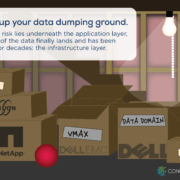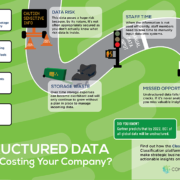The cloud-first priority shift is one of the biggest transformative changes impacting businesses as a result of Covid-19. According to Gartner, by 2024 more than 45% of IT spending on system infrastructure, infrastructure software, application software and business process outsourcing will shift from traditional solutions to cloud. And by 2025, 85% of large enterprises will have a cloud-first principle.
Information and data governance is one of the hottest and most debated topics any organization can discuss in today’s world. Every organization, big or small, knows that it has to protect its own data, but with regulations now being enforced through CCPA, GDPR, HIPAA, etc. the playing field has changed drastically. No business can afford to look the other way any longer. You know your business must adhere to these regulations and clean up its data to avoid unnecessary risk and legal action, but how?!?
Unstructured data, as you might guess, is any type of data that can’t be easily organized into your typical database or spreadsheet. These are the pieces of content that you come across every day. They exist in emails and social media. You might run across this information in webinars or conference calls. Your call centers get unstructured data in the form of verbal communications.
Cloud computing is one of the top three game-changing technologies, meaning many organizations regardless of size, industry, and technology will begin or increase their usage of the cloud. With that being said, according to Gartner’s most recent report, “through 2024, 80% of companies unaware of mistakes made by organizations in their cloud adoption will overspend in cloud by 20% to 50%.”
With data generation constantly increasing across the business and social worlds, artificial intelligence (AI) and machine learning (ML) are working to enhance our everyday tasks, both personal and professional, one step at a time. There are a number of themes emerging within the world that CIOs should consider for future planning:
The benefits organizations can achieve by migrating to cloud environments are extensive and well-documented: businesses can realize increased agility and scalability, improve disaster recovery, strengthen security, and create space for new IT initiatives, among other advantages. But cloud migrations can be complex, costly, and intimidating. Many organizations know they want to leverage cloud technology but aren’t sure how to get started or even what type of cloud environment is best.










